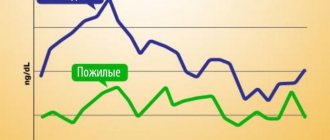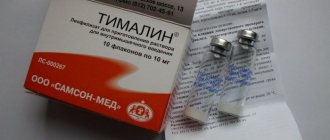Pharmacodynamics and pharmacokinetics
The systemic antibiotic Streptomycin belongs to the group of aminoglycosides. The active component has a pronounced bacteriostatic effect:
- At relatively small doses, it penetrates the walls of microbial cells and binds to receptor proteins on the 30S subunit of the bacterial ribosome. This leads to the breakdown of polyribosomes. As a result, the integrity of the DNA of the pathogenic flora is disrupted, and microbial cells stop further growth and development (paralyzing effect).
- The use of high doses of the drug demonstrates a stable bactericidal effect, expressed by a violation of the integrity of the cytoplasmic membranes and subsequent death of the microbial cell (exterminating effect).
The substance streptomycin is formed during the activity of radiant fungi Streptomyces globisporus, Streptomyces spp. According to the instructions, it exhibits bactericidal activity against:
- Mycobacterium tuberculosis;
- gram-positive microbes: Corynebacterium diphtheriae, Staphylococcus spp.;
- gram-negative microbes: Klebsiella pneumoniae, Proteus spp., Haemophilus ducreyi, Escherichia coli, Francisella tularensis, Shigella spp., Salmonella spp., Haemophilus influenzae, Brucella spp., Yersinia spp., Neisseria meningitidis and gonorrhoeae;
- Streptococcus spp., Enterococcus spp.
https://www.youtube.com/watch?v=TWJIpeDq4R0
Along with Vancomycin and Benzylpenicillin, the antibiotic is effective for endocarditis caused by Enterococcus faecalis or Streptococcus viridans. According to the instructions, Streptomycin is stable in a moderately acidic environment; when heated, acidic and alkaline solutions are destroyed. With increased activity of anaerobic bacteria, for example, Pseudomonas aeruginosa, Rickettsia spp., Spirochaetaceae, there is no positive dynamics at all.
When administered intramuscularly, the antibiotic is quickly absorbed from the injection site, penetrates the tissue, and spreads into the systemic bloodstream. Streptomycin is poorly absorbed from the digestive tract. Metabolized in the liver, 95% is excreted by the kidneys in the urine through glomerular filtration, in small concentrations through the intestines.
special instructions
During treatment with Streptomycin, it is necessary to monitor the function of the vestibular apparatus, auditory nerve and kidneys at least once a week.
Nephrotoxicity occurs more often in patients with impaired renal function, when high doses of the drug are prescribed or long-term treatment.
In case of unsatisfactory audiometric tests, the dose of Streptomycin is reduced or treatment is stopped completely.
For children under one year of age, the drug is prescribed only for truly serious “vital” indications.
If there is no therapeutic effect of treatment, the drug should be discontinued and appropriate therapy should be carried out, since the emergence of resistant microorganisms is possible.
During treatment with Streptomycin, patients should be careful when driving machinery and vehicles and doing work that requires increased attention and quick reaction.
When treating patients with chronic renal failure, doctors do not exclude the risk of developing nephrotoxicity. Therefore, during antibacterial therapy, it is important to monitor renal function using laboratory methods. Other special instructions:
- When treating with antibiotics, it is important to additionally monitor the functions of the auditory nerve and vestibular apparatus (once a week).
- If there is no positive dynamics of the underlying disease for 3–5 days, the drug must be replaced with an analogue due to the resistance of the pathogenic flora.
- The medication is slightly excreted in breast milk, which is important for women during lactation to know.
- If the results of audiometric tests are unsatisfactory, the dosage of the antibiotic is reduced or completely discontinued.
- During antibacterial therapy, care must be taken when controlling power mechanisms and engaging in intellectual activity.
Instructions for use of Streptomycin: method and dosage
Streptomycin is administered intramuscularly.
Immediately before administration, the contents of the vial should be dissolved in sterile water for injection in a ratio of 500 mg/2 ml or 1000 mg/4 ml.
Recommended adult doses: single – 500–1000 mg, daily – from 1000 to 2000 (maximum) mg. In case of poor tolerance, with a body weight of up to 50 kg and patients over 60 years of age, 750 mg of Streptomycin per day is prescribed.
Recommended daily doses for children:
- up to 3 months: 10 mg/kg;
- 3–6 months: 15 mg/kg;
- from 6 months to 2 years: 20 mg/kg;
- up to 13 years of age and older: 15–20 mg/kg (children under 13 years of age - up to 500 mg, adolescents - up to 1000 mg).
Maximum doses (single/daily):
- 3–4 years: 150/300 mg;
- 5–6 years: 175/350 mg;
- 7–9 years: 200/400 mg;
- 9–14 years: 250/500 mg;
- from 14 years: 500/1000 mg.
Scheme of drug use:
- tuberculosis of the lungs and other organs: 15 mg/kg (but not more than 1000 mg) per day in 1 or (if tolerated) 2 doses; course - from 3 months in combination with other anti-tuberculosis drugs;
- tularemia: 2 times a day, 500–1000 mg; course – 1–2 weeks until the 5–7th day of absence of febrile temperature;
- bacterial endocarditis of streptococcal origin (caused by Streptococcus spp., which exhibits sensitivity to penicillin): the first 7 days - 2 times a day, 1000 mg, the next 7 days - 2 times a day, 500 mg; single dose for patients over 60 years of age throughout treatment – 500 mg; course – 2 weeks in combination with benzylpenicillin;
- bacterial endocarditis of enterococcal origin: the first 14 days – 2 times a day, 1000 mg, the next 28 days – 2 times a day, 500 mg; course – 6 weeks in combination with benzylpenicillin (duration can be reduced due to ototoxicity);
- plague, brucellosis: 2 times a day, 1000 mg; course – from 7 to 10 days.
When treating granuloma venereum, urinary tract infections and acute bacterial intestinal infections, the daily dose should be divided into 2-4 administrations; Course duration is from 10 to 14 days.
For patients with renal failure, the daily dose of Streptomycin is reduced. Maximum daily dose depending on creatinine clearance:
- 50–60 ml/min: 500 mg;
- 40–50 ml/min: 400 mg.
The initial daily dose for arterial hypertension and coronary heart disease is 250 mg, its increase is possible if well tolerated.
Modern classification of antibiotics by groups: table
| Main group | Subclasses |
| Beta-lactams | |
| 1. Penicillins | Natural; Antistaphylococcal; Antipseudomonas; With an extended spectrum of action; Inhibitor-protected; Combined. |
| 2. Cephalosporins | 4th generation; Anti-MRSA cephem. |
| 3. Carbapenems | — |
| 4. Monobactams | — |
| Aminoglycosides | Three generations. |
| Macrolides | Fourteen-membered; Fifteen-membered (azoles); Sixteen members. |
| Sulfonamides | Short acting; Medium duration of action; Long acting; Extra long lasting; Local. |
| Quinolones | Non-fluoridated (1st generation); Second; Respiratory (3rd); Fourth. |
| Antituberculosis | Main row; Reserve group. |
| Tetracyclines | Natural; Semi-synthetic. |
Having no subclasses:
- Lincosamides (lincomycin®, clindamycin®);
- Nitrofurans;
- Hydroxyquinolines;
- Chloramphenicol (this group of antibiotics is represented by Levomycetin®);
- Streptogramins;
- Rifamycins (Rimactan®);
- Spectinomycin (Trobitsin®);
- Nitroimidazoles;
- Antifolates;
- Cyclic peptides;
- Glycopeptides (vancomycin® and teicoplanin®);
- Ketolides;
- Dioxidine;
- Fosfomycin (Monural®);
- Fusidane;
- Mupirocin (Bactoban®);
- Oxazolidinones;
- Evernomycins;
- Glycylcyclines.
Broad-spectrum antibiotic. Belongs to a large group of aminoglycosides.
Classification of antibiotics by mechanism of action
- drugs that inhibit the synthesis of bacterial cell walls (penicillin antibiotics, all generations of cephalosporins, Vancomycin®);
- destroying the normal organization of the cell at the molecular level and interfering with the normal functioning of the tank membrane. cells (Polymyxin®);
- agents that help suppress protein synthesis, inhibit the formation of nucleic acids and inhibit protein synthesis at the ribosomal level (Chloramphenicol preparations, a number of tetracyclines, macrolides, Lincomycin®, aminoglycosides);
- inhibit. ribonucleic acids - polymerases, etc. (Rifampicin®, quinols, nitroimidazoles);
- inhibitory processes of folate synthesis (sulfonamides, diaminopyrides).
The active compound is formed due to the synthesis of radiant fungi of streptomycetes. In small doses it has bacteriostatic properties. The active substance is quickly absorbed through the cell membranes of pathogenic bacteria and binds well to protein structures. In this case, a specific complex is formed that activates the breakdown of polyribosomes. Because of this, DNA synthesis is disrupted, which helps stop the growth of pathogenic bacteria.
It exhibits the greatest resistance in a slightly acidic environment, but is easily destroyed in acids and alkalis when heated.
Pharmacokinetics
After injections, the substance is quickly absorbed from the gastrointestinal tract. The highest concentration is observed within an hour after taking the medicine. It is unevenly distributed throughout tissues and binds poorly to protein structures. The substance is not metabolized in the liver. The half-life is approximately four hours. It is excreted from the body by renal filtration.
Overdose
If Streptomycin is taken correctly, an overdose is unlikely. If you accidentally take a large dose of the medicine once, unpleasant symptoms may occur:
- nausea and vomiting;
- ringing and stuffy ears, which contributes to a general decrease in hearing;
- ataxia;
- dizziness;
- strong thirst;
- problems with urination;
- breathing problems and possible cessation.
To treat overdose, calcium salts and cholinesterase inhibitors are used, and hemodialysis is performed. In case of severe breathing problems, artificial ventilation is used. In addition to these measures, general supportive therapy is prescribed until the symptoms of overdose disappear.
In case of an overdose of the drug, ataxia may occur.
When the recommended doses of Streptomycin are systematically exceeded, toxic reactions develop in the body. Overdose symptoms:
- dizziness;
- ataxia;
- nausea, vomiting;
- urinary retention;
- ringing in the ears, hearing loss;
- violation, respiratory arrest.
To ensure sustainable positive dynamics, doctors recommend the administration of calcium salts, anticholinesterase drugs, and mechanical ventilation. The patient is prescribed removal of the blockade of neuromuscular transmission, peritoneal hemodialysis, and dialysis in the hospital.
Side effects
- urinary system: nephrotoxicity (nausea, significant decrease or increase in frequency of urination, anorexia, oliguria, thirst, polyuria, vomiting);
- nervous system: drowsiness, headache, peripheral neuritis, weakness, neuritis of the facial nerve (tingling, numbness, burning sensation in the mouth or facial area), neuromuscular blockade when administered in combination with muscle relaxants (night apnea, difficulty breathing, respiratory arrest) , neurotoxic effect (paresthesia, muscle twitching, epileptic seizures);
- digestive system: nausea, diarrhea, vomiting, functional liver disorders (hyperbilirubinemia, increased activity of liver transaminases);
- allergic reactions: rash, itching, angioedema, skin hyperemia, fever;
- sensory organs: ototoxicity (ringing, hearing loss, hearing loss up to irreversible deafness, a feeling of fullness in the ears or buzzing), labyrinthine/vestibular disorders (vomiting, incoordination, nausea, dizziness, unsteadiness);
- local reactions: pain/hyperemia at the injection site.
In cases where any of the described disorders worsen, or the development of any other adverse reactions not specified in the instructions is noted, you should consult a specialist.
Contraindications when taking Streptomycin
There are conditions for which the medication cannot be used:
- severe renal failure;
- lesions of the 8th pair of cranial nerves;
- period of bearing a child;
- individual hypersensitivity to Streptomycin.
In addition to these, there are also a number of relative contraindications in which the drug should be taken with caution. Among them:
- botulism;
- Parkinson's disease;
- myasthenia gravis;
- endarteritis;
- chronic kidney failure;
- disturbances in the functioning of the heart muscle;
- low hearing;
- tendency to bleed;
- circulatory disorders in the brain;
- children and old age;
- breastfeeding period.
The drug should be taken with caution in case of botulism.
The drug should be taken with caution if there is a disturbance in the functioning of the heart muscle.
The drug should be taken with caution if blood circulation in the brain is impaired.
The drug should be taken with caution in myasthenia gravis.
The drug should be taken with caution in case of endarteritis.
The drug should be taken with caution in Parkinson's disease.
All these points must be taken into account before starting therapy. The patient should be aware of all contraindications and possible adverse reactions.
Terms and conditions of storage
Store in a dry place at a temperature of 15-25°C. Keep away from children.
Shelf life – 3 years.
The drug is stored in a dry and dark place, at a temperature no higher than 25°C, away from small children and pets, only in the original packaging.
Best before date:
- powder for the preparation of injection solution - 3 years;
- solvent, if included, is 4 years from the release date indicated on the original packaging.
Using the drug after the storage time has expired is strictly prohibited.
The medication can be found at any pharmacy and can only be purchased with a prescription.
This medicine can only be purchased with a special prescription from your doctor.
What is the price
The price in Russia will vary from 390 to 410 rubles. per package. The cost will depend on the manufacturer, the presence of solvent in the kit, dosage, region of sale and pharmacy markup.
The medication is a prescription drug and is sold in city pharmacies. The powder must be stored in a dry and dark place at temperatures up to 25 degrees, out of reach of children. Use the prepared solution immediately. According to the instructions for use, the shelf life of Streptomycin is 3 years.
Streptomycin price, where to buy
The price of Streptomycin in 1 g bottles is 380-500 rubles for 50 pieces.
- Online pharmacies in RussiaRussia
- Online pharmacies in UkraineUkraine
- Online pharmacies in KazakhstanKazakhstan
LuxPharma* special offer
- Streptomycin por.
for d/in solution 1.0g No. 50 RUB 2950 order
show more
Pharmacy24
- Streptomycin-KMP 1 g powder PAT "Kiivmedpreparat", Ukraine
7 UAH. order - Streptomycin KMP 0.5 g powder for the preparation of solution for injection PAT"Kievmedpreparat", Ukraine
4 UAH order
PaniPharmacy
- Streptomycin bottle Streptomycin sulfate powder 1g Ukraine, Kievmedpreparat OJSC
8 UAH order
show more
Streptomycin analogs
If the antibiotic does not help or causes side effects, the doctor individually selects an analogue. Effective medications and their brief characteristics:
- Streptomycin-calcium chloride complex. It is a double salt of calcium chloride and streptomycin hydrochloride. The drug is prescribed for tuberculosis and meningitis. Dosages are determined individually depending on the stage of the pathological process.
- Streptomycin-KMP. This is a powder for preparing a solution for intramuscular administration. The medication has pronounced antimicrobial and bactericidal activity.
There are several drug substitutes that are similar to Streptomycin in terms of active substance and therapeutic effect. The most common among them are:
- Isoniazid;
- Capreomycin;
- Coxerine;
- Kanamycin;
- Polcortolon;
- Rifacombe;
- Streptomycin GF;
- Streptomycin KMP.
Antibiotics. Rules of application.
Live healthy! You have been prescribed antibiotics. What to ask your doctor? (02/08/2016)
Drug interactions
Mixing a solution of Streptomycin with cephalosporins and penicillin antibiotics in one syringe is unacceptable.
When Streptomycin is used in combination with certain drugs/substances, the following effects may develop:
- beta-lactam antibiotics (penicillins, cephalosporins): synergistic action;
- other oto- and nephrotoxic drugs (including other polymyxins, aminoglycosides, capreomycin): increased likelihood of developing oto- and nephrotoxic effects;
- methoxyflurane: increased likelihood of adverse reactions to streptomycin;
- antimyasthenic drugs: decreased effectiveness;
- indomethacin (intravenous administration): decreased renal clearance of streptomycin, increased its concentration in the blood and increased half-life;
- opioid analgesics, drugs for inhalation anesthesia (halogenated hydrocarbons), transfusion of large amounts of blood with citrate preservatives as anticoagulants and other drugs that block neuromuscular transmission: increased neuromuscular blockade.





